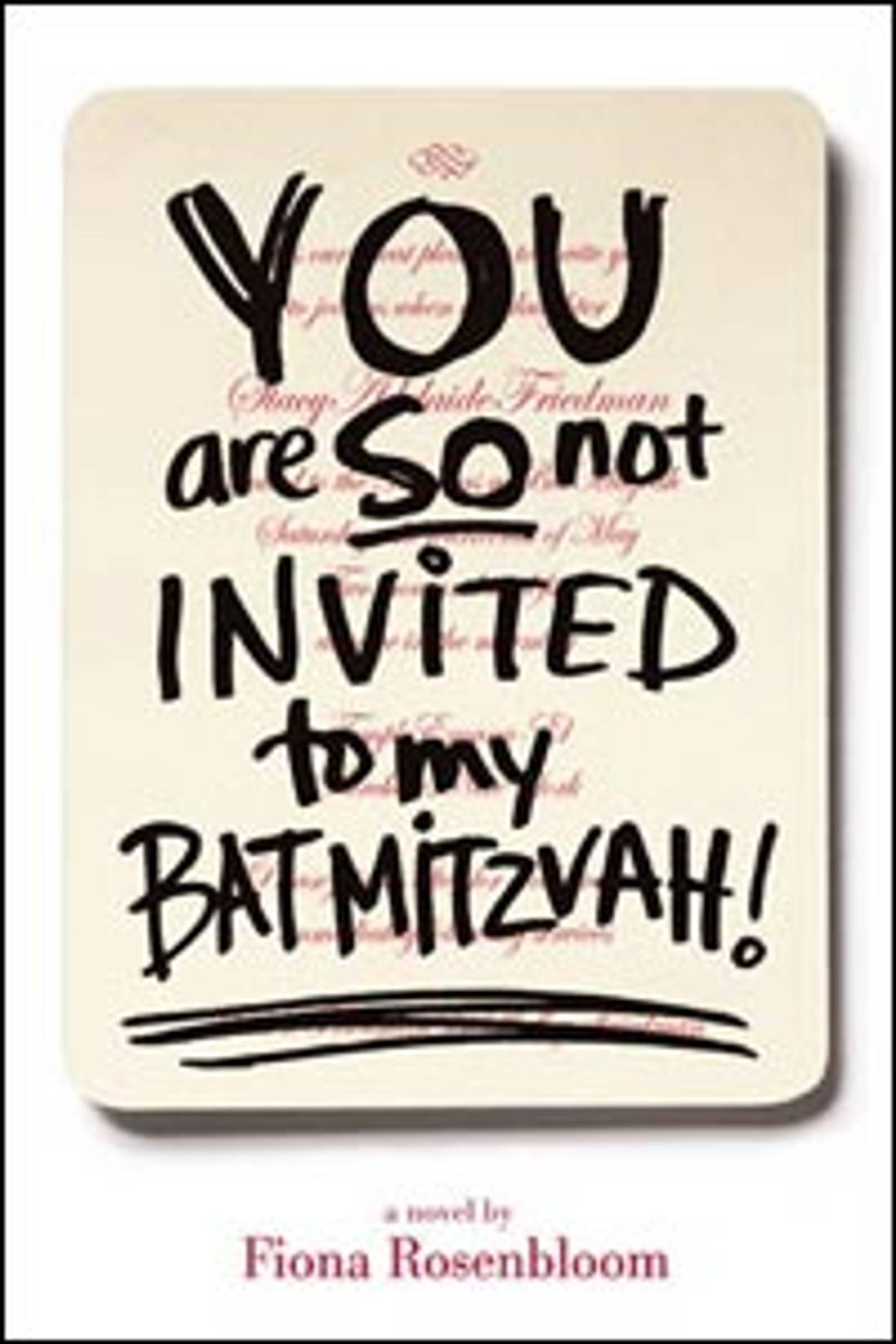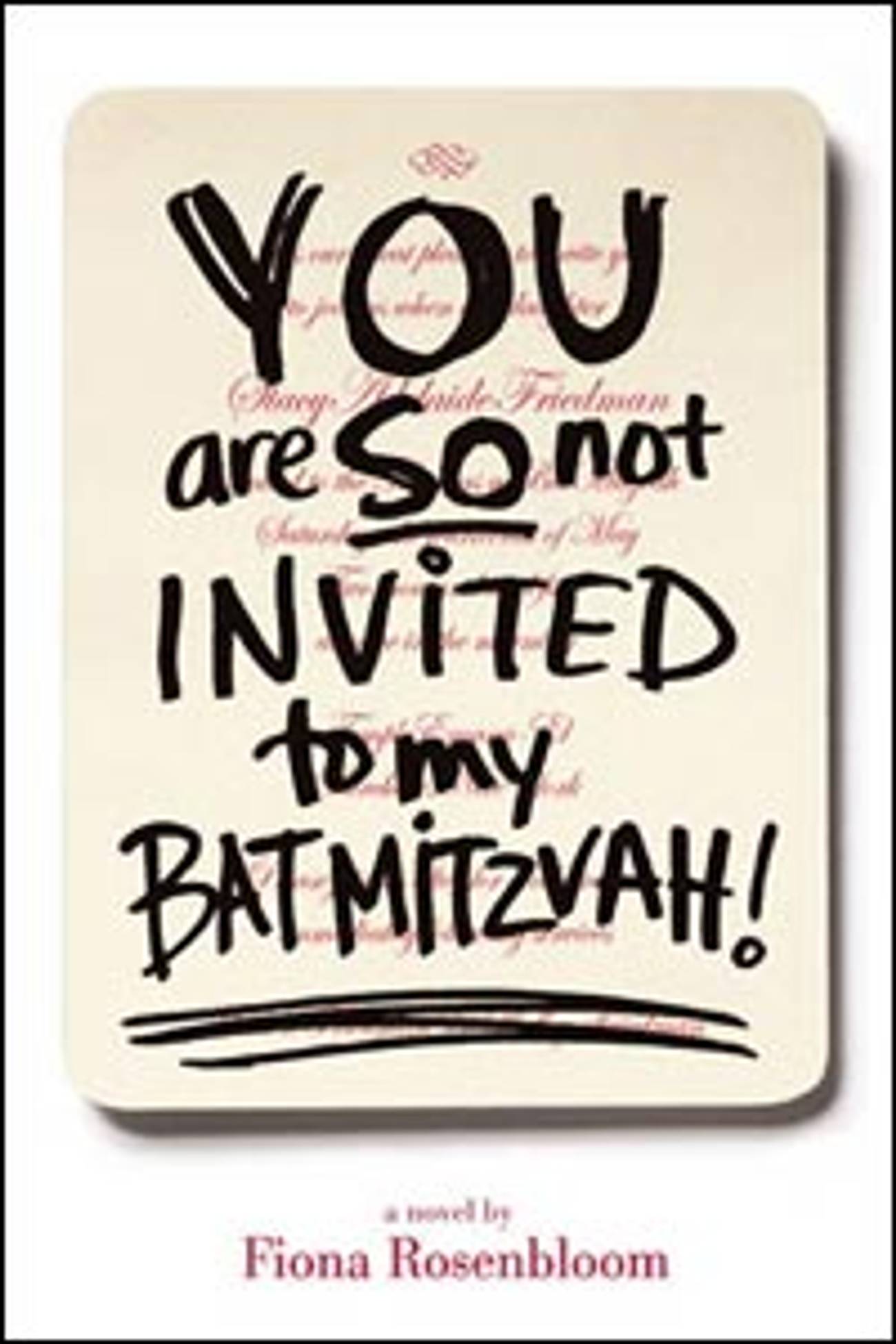Faking It
When girls want to know how Stacy Friedman’s bat mitzvah compares with my own, I need to be armed with answers.




Earlier this month, my pseudonym, Fiona Rosenbloom, came out with her first young-adult novel. (Mazel Tov, Fiona!) The novel centers on Jewish themes and is called You Are SO Not Invited to My Bat Mitzvah! Here’s how that happened: A month before the release of my own decidedly R-rated first novel, I was approached by a book packager who pitched me the bat mitzvah project. To be honest, I wasn’t interested in young-adult fiction, but to be fair, I needed a job. I had questions: Could I manage to work on my second novel while writing Fiona’s first? Was it wise to make this departure when I hadn’t yet established myself as a literary novelist? Did these packager people know what a bad seed I was? An advance was offered, and I accepted in greedy haste, signing on under one condition: that I be fitted with the Jewish pseudonym of my choice.
At the first plot meeting, my then-editor, Judy, started using Hebrew words to describe character traits, and I started using some words of my own: Secular Jew in over her head. I never went to Hebrew school. The closest I’ve come to God was on Essex Street leaning over an open barrel eating sour pickles. I don’t know from aleph and, though I love the bitter herbs at Passover, I don’t know why we eat them. Our Haggadah is a Diaspora of articles stapled together from Elle and Vogue, mixed with quotes from Bartlett’s, Primo Levi, and Martin Luther King. Sure, there are always people there who know the prayers; that’s why my mother invites them. But I took the job unable to tell the difference between the Torah and the Haftorah, a rabbi from a rebbe, a bar from a bas. Folks, I don’t even know my Hebrew name. In short: I SO did not have a bat mitzvah.
Yet somehow, between online research and heavy dependence on Judy, I managed to write a fairly believable book about a girl who does have one. Then I wrote a fairly believable bio for my pseudonym. Not only did I give Fiona a religious upbringing, but I referenced her bat mitzvah. I wasn’t thinking about book tours, or about middle-school kids who would want to know how much of the novel was autobiographical. Only after the book was bound with the bio on the back page did I realize what I’d done.
It’s one thing to apply Jergens Natural Glow moisturizer and claim you’ve been in the sun, and another to pretend that, as a teenager, you were called to the bema. When girls want to know how protagonist Stacy Friedman’s bat mitzvah compares with my own—that is, Fiona’s—I need to be armed with answers. I need to dredge up details, because Fiona rocked the dais.
Sketching in Fiona’s life is like creating a character for another novel. I pulled details from my own past, and some from my peers’. Like Aiden Black in the ninth grade, Fiona got the asymmetrical hair cut. Like me, she wore army pants and white T-shirts to school most days—until Alexis Biederman asked if we owned anything else. Unlike me, Fiona got into the college of her choice, Hampshire, where she studied sculpture and philosophy. We both taught ourselves to play guitar, but late one night after a bitter breakup, alone with her tacos and tears, Fiona discovered that she could sing.
How can a person like me—someone who attended an urban girls’ school where Christian prayers were mandatory; someone whose family celebrated Christmas not because we believe in the resurrection but because we are addicts and believe in instant gratification—be expected to pass herself off as a bat mitzvah? I created Fiona; I can play her. (Fiona and I dress alike, but I should mention that I will be wearing a wig.) My conundrum lies in the lying: Being Fiona means being a bat mitzvah, regaling girls with stories that never happened at a ritual I never experienced. I’ve already had mothers wanting to connect and bond, wanting me to provide some solace or advice concerning their Shira’s upcoming ceremony. This feels very awkward. Can I go to hell for this?
I’ll admit to wishing I didn’t have to fake it, that I was raised with a practice in place, one that I could choose to defy, like I do with yoga every single day. Could I possibly be yearning for what I lacked: a more traditional upbringing? And here is the spot where I could insert the cliché: that writing this book was my own bat mitzvah. Which is not entirely true.
But it’s not exactly untrue, either. In my daily life, I learn lessons through experience, but as a fiction writer I’m not interested in moral education. My first novel was about a couple doomed to repeat their mistakes. But in the world of young-adult fiction, morality prevails. Stacy had to learn something. While many Reform Jewish girls get through their bat mitzvahs unscathed by actual learning or heightened understanding or deep meaning, Stacy actually understood her Torah portion, she actually grew from the experience. In other words, Stacy gets it while I’m just faking it.
But on tour, I won’t be able to fake it any longer. I will be on the proverbial bema in front of a congregation of pubescent girls who will eat me alive if they intuit a crumb of inauthenticity. I’ve heard you can practice Judaism without believing in it and through the routine, the hope goes, comes belief. This was a lesson I learned with writing, with guitar, with cooking, and perhaps I’m about to learn it about my religion. So maybe by putting on the wig, sitting with preteen girls, answering the same questions and reading to them from the same book, I can develop my own routine, and through routine comes belief. Perhaps it’s fitting, then, that my rite of passage will take place back in middle schools, in front of developing and confused 13-year olds.